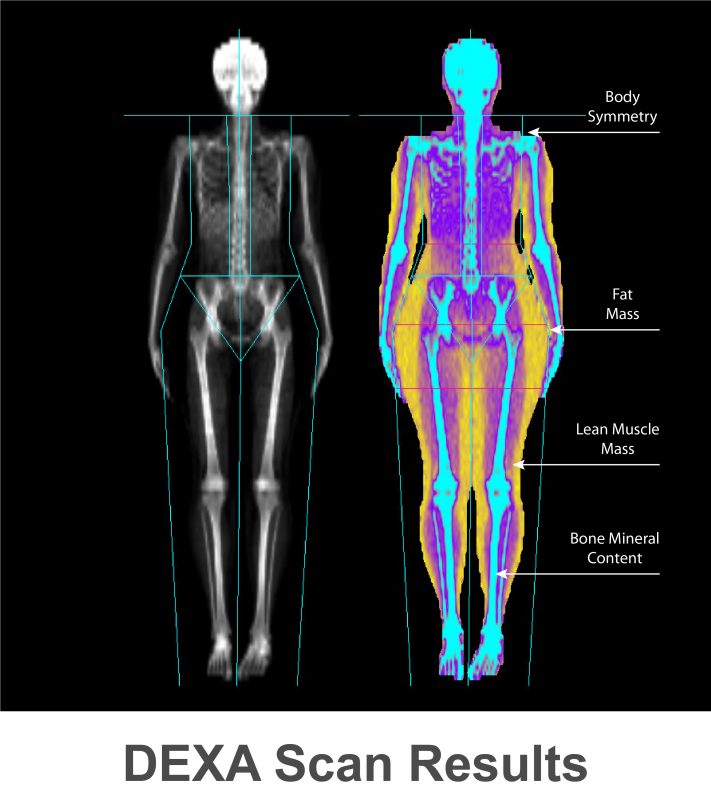A DEXA (DXA) scan is a type of imaging test that measures bone density, which helps to determine a person’s risk for osteoporosis and other bone-related conditions. The test uses a small amount of X-ray radiation to take detailed images of the bones in the body, typically the hip and spine.
One of the main advantages of a DEXA scan is its ability to measure bone density in precise detail. This allows for accurate diagnoses and treatment planning for conditions such as osteoporosis, which can lead to fractures and other complications.
The DEXA scan is also relatively quick and painless. The test typically takes only a few minutes, and patients simply lie on a table while the scanner moves over the area being imaged. There is also no need for any special preparation beforehand.
Some of the common reasons why a DEXA scan may be performed
- To evaluate bone density in patients with a history of osteoporosis or fractures
- To assess bone density in patients who are at high risk for osteoporosis, such as postmenopausal women or men over the age of 70
- To monitor bone density in patients who are taking medication to treat osteoporosis
The bone density scan
The procedure typically takes only a few minutes and is performed on an outpatient basis. Patients lie on a table while the scanner moves over the area being imaged, typically the hip and spine.
There is no need for any special preparation beforehand, and patients can wear their own clothing.
During the scan, a small amount of X-ray radiation is used to take detailed images of the bones.
The DEXA scanner uses two beams of low-dose X-ray to measure the density of the bones, one of which is absorbed more by soft tissue, and the other is absorbed more by the bones. This information is then used to calculate the bone density and create a detailed image of the bones.
The results of the scan will be interpreted by a radiologist or a specialist in bone health, who will use the data to determine a person’s risk for osteoporosis and other bone-related conditions.
If the results show low bone density, the doctor may recommend treatments such as medication or lifestyle changes to improve bone health.
Benefits of DEXA Scan
DEXA scans are a quick and painless way to accurately measure bone density, body composition, and muscle mass.
This non-invasive procedure uses low-dose X-rays to produce detailed images of the body’s bones and soft tissue.
The main benefits of DEXA scans include:
Assessing risk for fractures: DEXA scans can help identify individuals at high risk for fractures due to osteoporosis or other bone disorders.
Monitoring treatment: DEXA scans can be used to monitor the effectiveness of treatments for osteoporosis and other bone disorders, such as medication and exercise programs.
Assessing muscle mass: DEXA scans can provide detailed information about muscle mass, which can be useful for athletes and older adults at risk of muscle loss.
Evaluating body composition: DEXA scans can be used to evaluate the distribution of fat, muscle, and bone in the body, which can be useful for a variety of clinical purposes such as weight management, bodybuilding, or nutrition monitoring.
Research: DEXA scans are also used in research studies to investigate the effects of various interventions on bone density, body composition, and muscle mass.
*It’s important to note that DEXA scans are not recommended for pregnant women, and people with certain medical conditions may not be able to have a DEXA scan.
Additionally, DEXA scans are safe, fast, and highly accurate, making them an ideal diagnostic tool for a wide range of patients. They are increasingly used as a benchmark for monitoring weight loss, muscle building, and overall body composition changes.
Who should have a DEXA scan?
DEXA scans are recommended for a variety of individuals to assess their bone density, body composition, and muscle mass.
These include:
- Women who are postmenopausal or at increased risk for osteoporosis, such as those with a family history of the condition.
- Individuals who have suffered a fracture after minimal trauma.
- People who have a medical condition that affects bone density, such as hyperthyroidism or inflammatory bowel disease.
- Individuals who are taking medication that may affect bone density, such as glucocorticoids or anticonvulsants.
- Athletes and older adults who are interested in monitoring muscle mass or body composition changes.
- People who are trying to lose weight or gain muscle mass for health or aesthetic reasons.
Remember it’s always best to consult with your healthcare provider to see if a DEXA scan is appropriate for you.
How often should a DEXA scan be done?
The frequency of DEXA scans is based on an individual’s risk factors and medical history.
For people at high risk for osteoporosis, such as postmenopausal women or individuals with a family history of the condition, is recommended a DEXA scan every 2 years.
For those who have been diagnosed with osteoporosis or other bone disorders, DEXA scans may be done annually to monitor the effectiveness of treatment and track changes in bone density.
Individuals who are taking medication that may affect bone density, such as glucocorticoids or anticonvulsants, should also have DEXA scans as per their healthcare provider’s recommendations.
For athletes, bodybuilders, or people who are trying to lose weight or gain muscle mass, DEXA scans can be done periodically as a benchmark to track changes in body composition.
*It’s important to note that DEXA scans use low-dose X-rays, and the radiation exposure is considered minimal, but it’s always good to consult with your healthcare provider to determine the appropriate frequency of DEXA scans for your specific needs and health conditions.
What are the limitations of a bone density scan?
A bone density scan, also known as a DEXA scan, is widely used for measuring bone mineral density and assessing the risk of osteoporosis. However, there are some limitations to this test.
One limitation is that the scan can only measure the density of certain bones, such as the hip and spine, and not the entire skeleton.
Additionally, the results of the test may not be accurate in certain populations, such as men or those with very low or very high bone density.
The test is also not able to detect bone fractures, which is a common complication of osteoporosis.
Despite these limitations, a DEXA scan is still considered a valuable tool for assessing bone health.
In general, DEXA is a valuable screening method for identifying and treating bone conditions and is a safe and non-invasive way to assess bone density. It is important to consult your physician if you have any questions about your bone health and whether you should consider having a DEXA.
WANT TO KNOW WHAT TO EXPECT FROM A DEXA BODY COMPOSITION SCANNER?
PREPARING FOR YOUR ULTRASOUND

